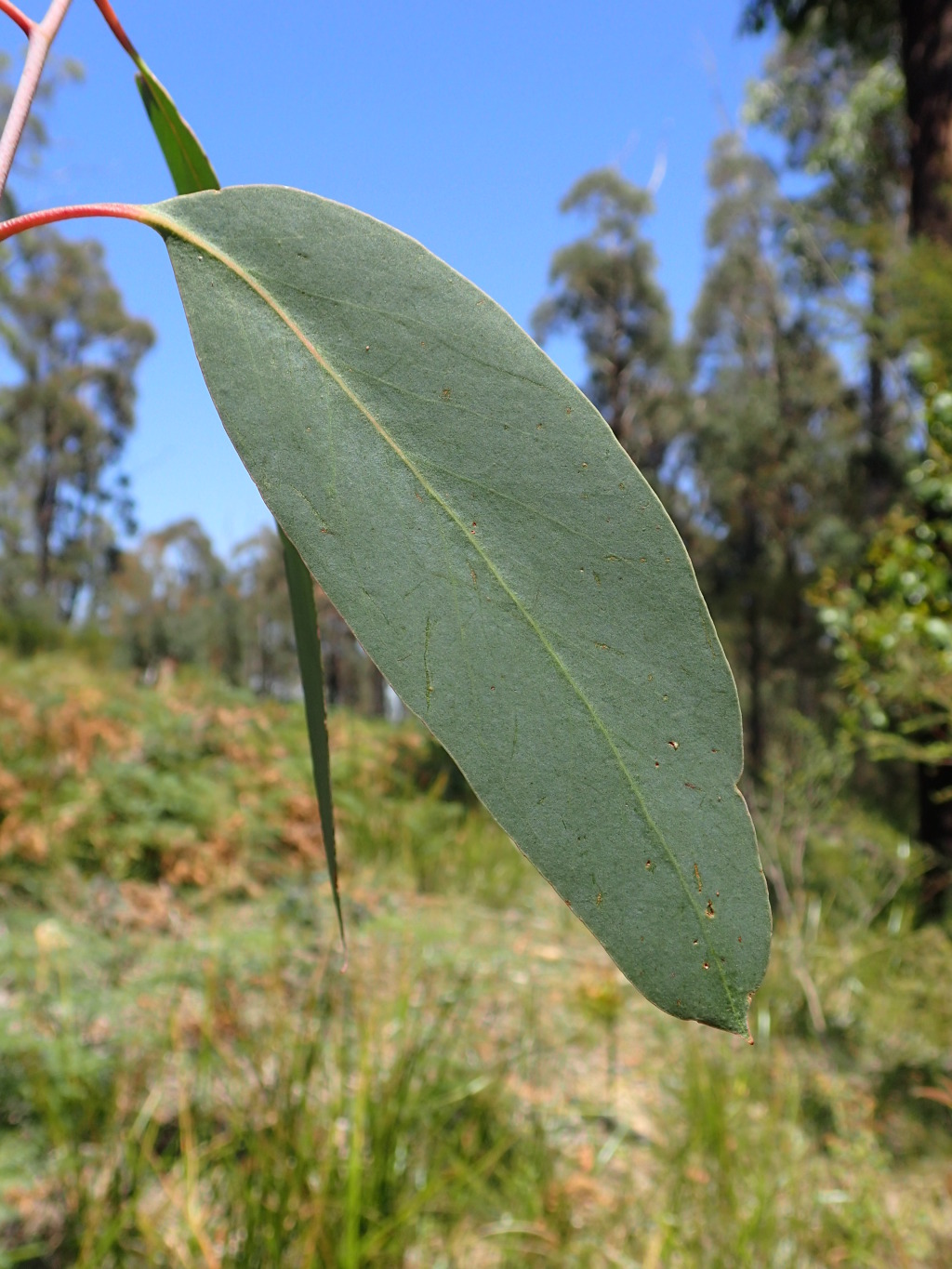Eucalyptus sieberi
L.A.S.Johnson Silvertop AshTree to 45 m tall; bark rough over whole trunk, at first thin, flaky, orange-brown, becoming thick, compact, longitudinally furrowed, brown-black. Stem of saplings glaucous. Juvenile leaves sessile, opposite for few pairs then petiolate, alternate, ovate or broadly falcate, to 17 cm long, 7.5 cm wide, glaucous; adult leaves petiolate, alternate, lanceolate, 9–15 cm long, 1.2–2.8 cm wide, concolorous, glossy, green to olive-green; side veins very acute to subparallel; reticulation very sparse, with numerous island oil glands. Inflorescences axillary, unbranched; peduncles to 1.6 cm long, 7–15-flowered; buds pedicellate, clavate, to 0.7 cm long, 0.5 cm diam., no scar (single operculum); operculum hemispherical; stamens mostly inflexed, with outer staminodes; anthers dorsifixed, reniform. Style short; ovules in 2 vertical rows; flowers white. Fruit pedicellate, obconical, to 1.1 cm long, 0.9 cm diam.; disc level to slightly descending; valves 3, rim level; seed dark brown to black, glossy, smooth, pyramidal but distorted by one curved face, hilum terminal. Flowers Sep.–Jan.
VVP, GipP, CVU, NIS, EGL, EGU, WPro, HSF, HNF, Strz, MonT, HFE, VAlp. Also NSW, Tas. Abundant on poor soils in dry hills and coastal lowland areas south and east of the Great Dividing Range in eastern Victoria, with the westernmost occurrence being west of Gisborne in the Pyrete Range. .
Notable for the thick, furrowed, brown-black, rough bark over the whole trunk of the mature tree, and the glaucous stems of young saplings. The stems of young trees are recognized by thinner, flaky, orange-brown, rough bark.
Brooker, M.I.H.; Slee, A.V. (1996). Eucalyptus. In: Walsh, N.G.; Entwisle, T.J., Flora of Victoria Vol. 3, Dicotyledons Winteraceae to Myrtaceae, pp. 946–1009. Inkata Press, Melbourne.
 Spinning
Spinning


